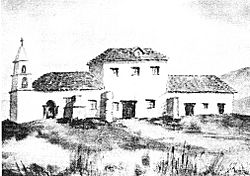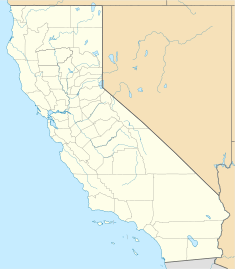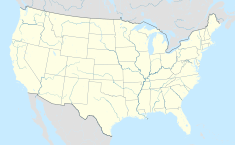Las Flores Estancia facts for kids

Las Flores' "San Pedro Chapel" as it appeared around 1850. The structure, along with its adjoining buildings, were constructed in 1823.
|
|
| Location | near San Clemente, California |
|---|---|
| Coordinates | 33°17′59.81″N 117°27′39.85″W / 33.2999472°N 117.4610694°W |
| Name as founded | Estancia de la Misión de San Luis, Rey de Francia |
| English translation | Station of the Mission San Luis Rey de Francia |
| Patron | Saint Peter, the Apostle |
| Founding date | 1823 |
| Founding priest(s) | Father Antonio Peyrí |
| Military district | First |
| Native tribe(s) Spanish name(s) |
Payomkawichum-Luiseño + Acagchemem-Juaneño |
| Native place name(s) | Huis'ne |
| Governing body | United States Government |
| Current use | Boy Scout Camp |
| Designated | November 24, 1968 |
| Reference no. | 68000021 |
| Designated | November 24, 1968 |
| Reference no. | #616 |
The Las Flores Estancia (also called Las Flores Asistencia) was a special "station" built in 1823. It was part of a big system of Spanish missions in Alta California, which is now California.
Las Flores Estancia was located about halfway between Mission San Luis Rey de Francia and Mission San Juan Capistrano. You can find it near Bell Canyon on the Camp Pendleton Marine Corps Base. This is about ten miles south of San Clemente in northern San Diego County, California. The site is also home to the famous Las Flores Adobe, which was finished in 1868.
Contents
History of Las Flores Estancia
Early Beginnings and First Baptisms
The very first recorded baptisms in upper California happened nearby on July 22, 1769. This was on the banks of a stream that Spanish soldiers called Los Cristianos. These soldiers were with the Portolà expedition as they traveled north. Today, this spot is known as La Cañada de los Bautismos or Los Christianitos. It is now a California Historical Landmark.
Life at the Estancia
This property was once known as the "San Pedro Rancho." It had a chapel with a tile roof and a place for travelers to stay. Both buildings were built by Luiseño and Juaneño Native Americans. These buildings formed three sides of a large square. A part of the south side even had a second floor. The bell tower was so tall that early sailing ships used it to help them navigate!
People from two nearby Native American villages, Chumella and Questmille, often visited the chapel. As early as 1810, Mission San Luis Rey was raising sheep at Las Flores. To help the station, farmers grew barley, maize (corn), and wheat. They also raised cattle at a nearby spot called Las Pulgas. The ranch was also known for making hides and tallow (animal fat).
Changes and Challenges
In 1833, the Mexican government passed a law to "secularize" the missions. This meant they would no longer be controlled by the church. After this, the Franciscans (the priests) mostly left the mission. They took most valuable items with them. Local people then used parts of the mission buildings for their own construction projects.
Even with these changes, the Native American towns at Las Flores continued for some time. The site was also where a battle took place in April 1838. This battle was between Juan Bautista Alvarado and Carlos Antonio Carrillo. They were fighting over who would be the governor of Alta California.
New Owners and Uses
In 1841, the former estancia became part of a large Mexican land grant. It was called the "Rancho Santa Margarita y Las Flores" and was given to the Pico brothers. They built a large traditional Spanish adobe house on the land. They also ran a sheep ranch there until the 1860s, when a drought caused it to fail. In 1864, Pio Pico sold the Las Flores ranch to his brother-in-law, Juan Forster. Forster made it part of a much bigger ranch, covering about 144,000 acres (58,275 hectares).
In 1941, the United States Government bought the ranch. They used it to create the United States Marine Corps' Camp Pendleton. Later, the government leased about 46 acres (19 hectares) around the estancia to the Boy Scouts of America. In 1974, the Boy Scouts built a camp there called Rancho Las Flores. Thousands of scouts and other young people visit this camp every year.
Las Flores Adobe
The Las Flores Adobe was built between 1867 and 1868 by Marco Forster. He was the son of Juan Forster. It is located on the west side of Stuart Mesa Road.
This adobe is a large, U-shaped building. It has a main two-story section that forms one side of the "U." The other parts are single-story sections. The two-story part is a good example of Monterey Colonial architecture. It has a wooden frame, adobe walls covered in plaster, and a wooden porch all around it.
A big project to restore the building began in 2001. This was supported by the Marine Corps and the Camp Pendleton Historical Society. The society now leads tours of the site from time to time.
Images for kids
See also
 In Spanish: Las Flores Estancia para niños
In Spanish: Las Flores Estancia para niños
- List of Spanish missions in California
- San Antonio de Pala Asistencia
- Luiseño
- Mission Indians
- California mission clash of cultures
- Mission San Juan Capistrano
- Mission San Luis Rey de Francia
- List of National Historic Landmarks in California
- National Register of Historic Places in San Diego County, California




